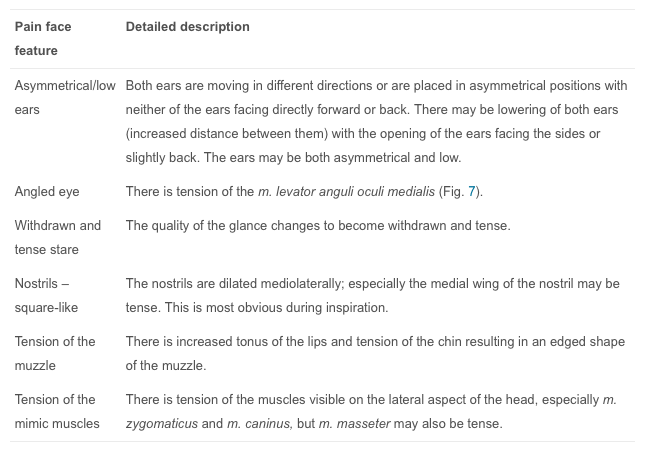
An equine pain face
As in humans animals show pain through facial expression. This study investigated the facial expressions in horses during induced pain.
Pain was induced in six horses by two noxious stimuli, a blood pressure cuff on the fore leg and application of capsaicin (chili pepper extract) on the skin (10 x 10 cm clipped area). These are common methods in human pain research.
The researchers performed:
- Clinical examination (heart rate (HR), respiratory rate (fR), rectal and skin temperature, skin sensitivity was evaluated with soft touch (cotton bud) and pin pricks)
- Video recordings
- Observations of pain behaviour (by a modified version of the composite measure pain scale (Lindegaard et al. 2010))
Facial expressions changed in all horses during pain inductions and made changes in ear positions, eyes, nostrils and muscle tension. These alterations were not static and also weren’t seen all at the same time. The authors of the article made a very clear overview in the form of a table and described every facial feature separately. See table below.
This outcome data is a very usable additon to the information provided by the researchers of these articles:
Pain behaviour, such as lameness, is often used to assess progression of a condition, the efficacy of analgesia, etc. This study first assessed whether lameness could accurately predict the severity of tissue damage. Pain expression - linked to personality in horses
This study investigated if there was an association between vertebral problems, assessed by chiropractic examination, and behavioural problems like aggressiveness towards humans assessed by using standardized behavioural tests. Chronic back pain and aggression in horses
> From: Gleerup et al., Veterinary Anaesthesia and Analgesia 42 (2015) 103-114. All rights reserved to Elsevier B.V.. Click here for the online summary.


